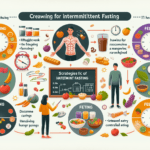So you’re trying to manage your cravings and eat more mindfully, huh? Well, you’re in luck! In this article, we’ll explore the concept of mindful eating and how it can help you gain better control over your food cravings. Whether you find yourself constantly reaching for that bag of chips or mindlessly snacking in front of the TV, we’ve got some practical tips and techniques to help you become more aware of your eating habits and make healthier choices. So, grab a snack (preferably a nutritious one!) and get ready to dive into the world of mindful eating and cravings management.

What is Mindful Eating?
Definition
Mindful eating is a practice that involves paying attention and being fully present during the eating experience. It is about being aware of the flavors, textures, and sensations of the food, as well as the body’s hunger and fullness cues. Mindful eating encourages a non-judgmental and curious approach to eating, allowing individuals to truly savor and enjoy their meals.
Principles
There are several principles that guide mindful eating. The first principle is to eat with intention and attention. This means consciously choosing what to eat and being fully present while consuming it. The second principle is to listen to your body’s hunger and fullness signals. Paying attention to these signals can help prevent overeating and promote a healthier relationship with food. The third principle is to identify and acknowledge the emotional and sensory aspects of eating. This involves recognizing and addressing emotional triggers that may lead to unhealthy eating habits. Finally, mindful eating involves practicing gratitude and appreciation for the food we eat, as well as the effort that went into its preparation.
Understanding Cravings
Definition
Cravings are intense desires or urges to consume specific foods. These cravings often arise suddenly and can be difficult to resist. They can be triggered by a variety of factors, such as emotions, environmental cues, or nutrient deficiencies.
Causes of Cravings
Cravings can have both physical and psychological causes. Physically, cravings may be a result of imbalances in blood sugar levels or hormonal fluctuations. For example, when blood sugar levels drop, the body may crave sugary or carbohydrate-rich foods to provide quick energy. Psychologically, cravings can be triggered by emotions such as stress, boredom, or even nostalgia. Environmental cues, such as the sight or smell of certain foods, can also trigger cravings.
The Link Between Mindful Eating and Cravings Management
How Mindful Eating Helps Manage Cravings
Mindful eating can be a powerful tool in managing cravings. By practicing mindful eating, you can improve your ability to recognize and differentiate between true hunger and emotional or habitual cravings. Mindfulness allows you to pause and observe your cravings without immediately giving in to them. This increased awareness can help you make more conscious and intentional food choices, rather than simply reacting to cravings.
Benefits of Mindful Eating for Cravings Management
When it comes to managing cravings, mindful eating offers numerous benefits. By being present and fully engaged with your eating experience, you can savor the flavors and textures of your food, which can help satisfy cravings more effectively. Additionally, mindful eating can help you build a healthier relationship with food by reducing guilt and judgment associated with indulging in cravings. It allows you to make choices that align with your overall well-being, rather than succumbing to impulsive or emotional eating.
Practical Tips for Mindful Eating
Eating with Awareness
To practice mindful eating, start by eating without distractions. Put away your phone, turn off the TV, and focus solely on the act of eating. Pay attention to the taste, texture, and aroma of the food. Take small bites and chew slowly, allowing yourself to fully experience each bite. Notice the sensations in your body as you eat, and try to tune in to your hunger and fullness levels.
Chewing and Enjoying Food
One essential aspect of mindful eating is chewing your food thoroughly. Aim to chew each bite at least 20-30 times before swallowing. This not only aids in digestion but also allows you to truly savor and enjoy the flavors of your food. By slowing down the eating process, you give your body time to register feelings of fullness, preventing overeating.
Mindful Food Choices
When it comes to mindful eating, it’s important to choose foods that nourish and satisfy you. Focus on whole, unprocessed foods that provide essential nutrients. Consider the impact of your choices on your overall well-being and aim for a balanced and varied diet. Practice awareness when selecting your meals and snacks, ensuring that they align with your values and goals.

Mindful Eating Techniques
Mindful Breathing
Mindful breathing is a technique that can help anchor your attention and bring you into the present moment. Before beginning a meal or snack, take a few deep breaths, focusing on the sensation of the breath entering and leaving your body. This can help create a sense of calm and presence, allowing you to fully engage with your eating experience.
Body Scan
The body scan is a technique that involves systematically bringing attention to different parts of your body. Start at the top of your head and slowly work your way down, paying attention to any sensations or areas of tension. This technique can be helpful before a meal to bring awareness to how your body is feeling and to promote a sense of relaxation and connection with your physical self.
Savoring the Moment
Savoring the moment is about fully immersing yourself in the eating experience and appreciating the present. Take time to notice the colors, smells, and textures of your food. Chew slowly and mindfully, allowing yourself to truly taste and savor each bite. Engage your senses and bring a sense of gratitude and appreciation to each meal.
Mindful Eating and Emotional Eating
Recognizing Emotional Triggers
Emotional eating refers to the tendency to use food as a way to cope with or soothe negative emotions. Mindful eating can help you recognize emotional triggers by increasing your awareness of internal and external cues that drive emotional eating. By pausing and observing your emotions before reaching for food, you can gain insight into the underlying reasons for your cravings and develop healthier coping strategies.
Using Mindful Eating to Overcome Emotional Eating
Mindful eating can be a powerful tool in overcoming emotional eating. By practicing mindfulness during meals, you can develop a greater sense of self-awareness and emotional regulation. Instead of automatically turning to food when faced with an emotional trigger, you can pause and consider alternative ways to address your emotions. Mindful practices such as deep breathing or journaling can provide healthier outlets for emotional expression.
Building a Mindful Eating Practice
Starting Small
Building a mindful eating practice takes time and patience. Start by incorporating mindful eating into one meal or snack per day. Gradually increase the frequency and duration of your mindful eating sessions as you become more comfortable with the practice. Remember that progress is a journey, and it’s okay to start small and build momentum over time.
Creating a Routine
Consistency is key when it comes to developing a mindful eating practice. Create a routine by setting aside designated meal times and creating a calm and inviting eating environment. Establishing a regular practice helps to reinforce the habit of mindful eating and makes it easier to integrate into your daily life.
Seeking Support
Consider seeking support as you embark on your mindful eating journey. Connect with like-minded individuals who are also interested in mindful eating or consider joining a mindfulness or meditation group. Having a support system can provide encouragement and accountability, making it easier to stay committed to your mindful eating practice.
Mindful Eating and Weight Management
The Role of Mindful Eating in Weight Management
Mindful eating can play a significant role in weight management. By practicing mindfulness, you become more attuned to your body’s hunger and fullness cues, which can help prevent overeating and promote healthy portion control. Additionally, mindful eating can reduce emotional and impulsive eating, which are often associated with weight gain. By bringing awareness to the eating process, you can make more conscious food choices that support your weight management goals.
Mindful Eating Strategies for Weight Loss
If weight loss is your goal, mindful eating can be a valuable tool in your journey. Start by practicing portion control and paying attention to your body’s signals of fullness. Focus on nutrient-dense foods that provide satiety and nourishment, rather than empty calories. Practice mindful breathing and engage in stress-reducing activities, as stress can often lead to weight gain. Finally, be patient and compassionate with yourself throughout the weight loss process, recognizing that sustainable change takes time and dedication.
Mindful Eating for Healthy Relationships with Food
Overcoming Food Guilt and Judgment
Many individuals struggle with guilt and judgment when it comes to their relationship with food. Mindful eating can help overcome these negative emotions by promoting self-compassion and acceptance. By approaching eating with curiosity and non-judgment, you can let go of restrictive and punitive attitudes toward food. Instead, focus on nourishment and enjoyment, allowing yourself to savor and appreciate the foods you choose to eat.
Developing a Positive Relationship with Food
Mindful eating can help foster a positive relationship with food by shifting the focus from deprivation and restriction to nourishment and pleasure. By engaging your senses and truly savoring your meals, you can develop a deeper appreciation for the nourishment that food provides. Practice gratitude for the abundance of food available and let go of labels such as “good” or “bad” foods. Instead, view food as a source of nourishment and enjoyment, allowing yourself to make choices that support your overall well-being.
Mindful Eating and Improved Digestion
Eating in a Relaxed State
Eating in a relaxed state is crucial for optimal digestion. When the body is in a state of stress or anxiety, digestion is often compromised. Mindful eating encourages you to create a calm and relaxed environment before and during your meals. Take a moment to breathe deeply and release any tension before you begin eating. By eating in a relaxed state, you allow your body to properly digest and absorb nutrients, leading to improved overall digestion.
Chewing Food Properly
Properly chewing your food is an essential aspect of mindful eating and improved digestion. When you chew food thoroughly, you break it down into smaller particles, making it easier for the digestive system to process. Additionally, chewing stimulates the production of digestive enzymes in the saliva, aiding in digestion. By taking the time to chew each bite mindfully, you can support optimal digestion and nutrient absorption.
In conclusion, mindful eating is a practice that promotes awareness, presence, and intentionality during the eating experience. It can help manage cravings, develop a healthier relationship with food, support weight management, and improve digestion. By incorporating the principles and techniques of mindful eating into your daily life, you can cultivate a more harmonious and fulfilling relationship with both food and yourself.








